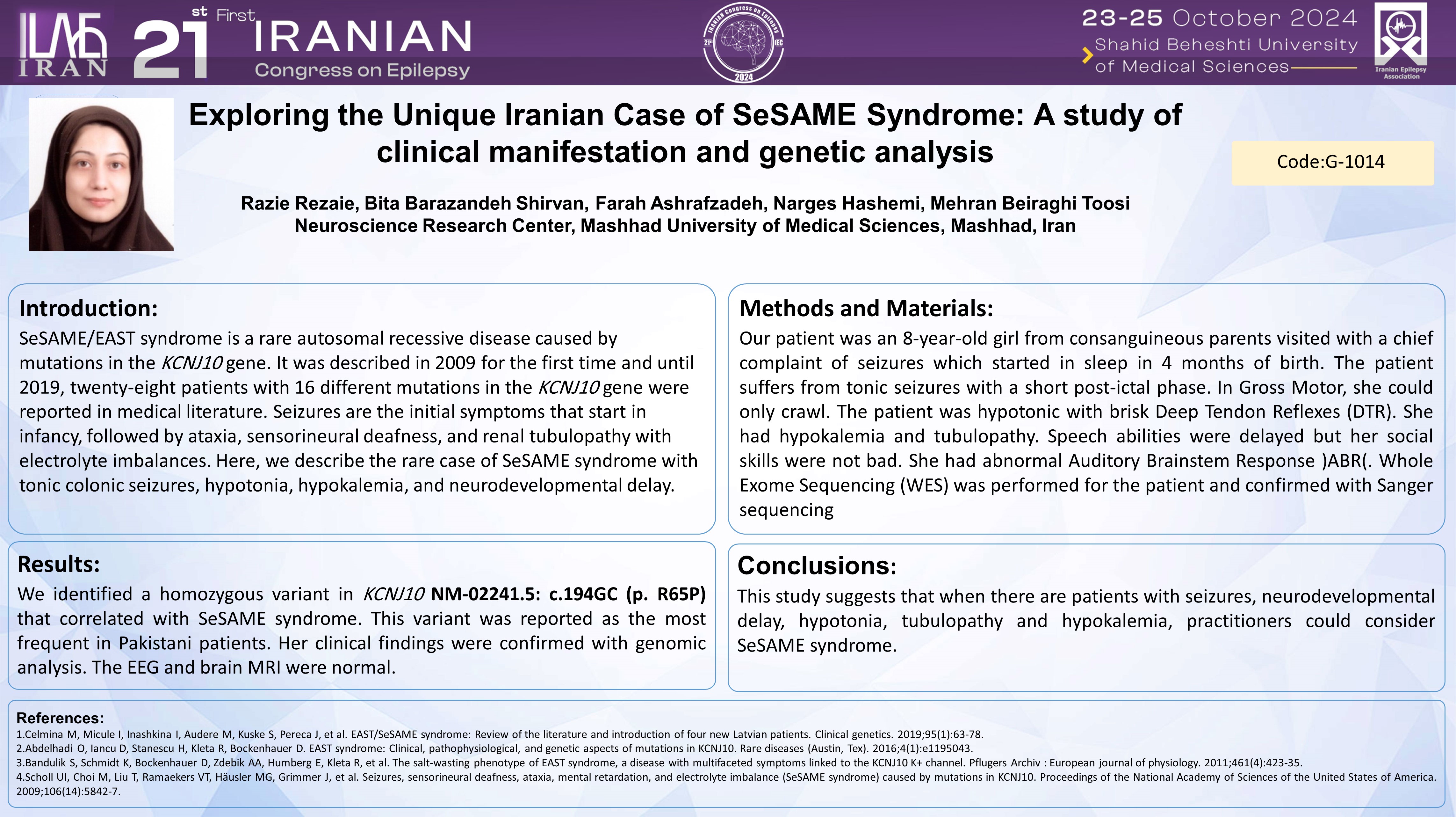Exploring the Unique Iranian Case of SeSAME Syndrome: A study of clinical manifestation and genetic analysis
کد: G-1014
نویسندگان: Razie Rezaie ℗, Bita Barazandeh Shirvan, Farah Ashrafzadeh, Narges Hashemi, Mehran Beiraghi Toosi ©
زمان بندی: زمان بندی نشده!
دانلود: دانلود پوستر
خلاصه مقاله:
background
SeSAME/EAST syndrome is a rare autosomal recessive disease caused by mutations in the KCNJ10 gene. It was described in 2009 for the first time and until 2019, twenty-eight patients with 16 different mutations in the KCNJ10 gene were reported in medical literature. Seizures are the initial symptoms that start in infancy, followed by ataxia, sensorineural deafness, and renal tubulopathy with electrolyte imbalances. Here, we describe the rare case of Sesame syndrome with tonic colonic seizures, hypotonia, hypokalemia, and neurodevelopmental delay
Methods
Our patient was an 8-year-old girl from consanguineous parents visited with a chief complaint of seizures which started in sleep in 4 months of birth. The patient suffers from tonic seizures with a short post-ictal phase. In Gross Motor, she could only crawl. The patient was hypotonic with brisk Deep Tendon Reflexes (DTR). She had hypokalemia and tubulopathy. Speech abilities were delayed but her social skills were not bad. She had abnormal Auditory Brainstem Response )ABR(. Whole Exome Sequencing (WES) was performed for the patient and confirmed with Sanger sequencing
Findings
We identified a homozygous variant in KCNJ10 NM-02241.5: c.194GC (p. R65P) that correlated with SeSAME syndrome. This variant was reported as the most frequent in Pakistani patients. Her clinical findings were confirmed with genomic analysis. The EEG and brain MRI were normal.
Conclusion
This study suggests that when there are patients with seizures, neurodevelopmental delay, hypotonia, tubulopathy and hypokalemia, practitioners could consider SeSAME syndrome.
Key words
SeSAME, Seizure, Iranian
